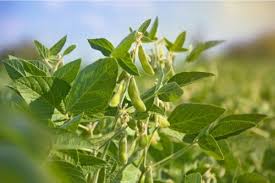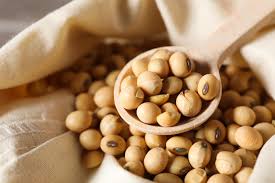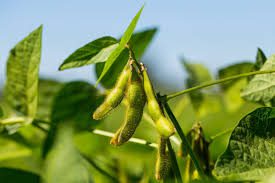Soy is a versatile and nutritious plant that has been an essential part of human diets for centuries. It comes from soybeans, which are small, round legumes with a rich history in various cultures around the world. People use soy in many different forms, from soy milk to tofu, and it has become a staple ingredient in numerous dishes.
One of the remarkable qualities of soy is its high protein content. Proteins are vital for our bodies to grow and repair tissues. Soybeans are a great source of plant-based protein, making them an excellent option for vegetarians and vegans. Including soy in your diet can contribute to meeting your daily protein needs in a tasty and sustainable way.
Apart from being a protein powerhouse, soy offers a range of health benefits. It contains essential amino acids, which are the building blocks of proteins that our bodies cannot produce on their own. These amino acids play a crucial role in maintaining our overall well-being.
Soy is also known for its heart-healthy properties. It contains unsaturated fats, which are considered healthier than saturated fats. Consuming soy in moderation may help lower cholesterol levels, reducing the risk of heart-related issues. Additionally, soy products often contain compounds called phytochemicals, which have antioxidant properties that can further support heart health.
For those looking to maintain a healthy weight, soy can be a valuable ally. Its protein content helps in creating a feeling of fullness, which may prevent overeating. Including soy-based foods in a balanced diet can be a tasty and satisfying way to manage weight.
In recent years, soy has gained attention for its role in supporting hormonal balance. Soybeans contain compounds called phytoestrogens, which are similar in structure to the estrogen produced by the human body. Some studies suggest that consuming moderate amounts of soy may help alleviate symptoms associated with hormonal changes, such as those experienced during menopause.
Soy’s versatility extends beyond its health benefits. It can be transformed into various products, each with its unique texture and flavor. Tofu, for example, is a popular soy product with a mild taste and a versatile nature. It can be used in savory and sweet dishes, making it a favorite among those seeking plant-based alternatives in their meals.
Soy milk, another well-known soy product, serves as a dairy-free alternative for those with lactose intolerance or who choose not to consume animal products. It can be used in coffee, cereals, and cooking, offering a creamy texture and a mild, slightly nutty taste.
In addition, soy is a remarkable and adaptable plant that contributes to both our culinary experiences and overall health. Its high protein content, heart-healthy attributes, and versatility in various dishes make it a valuable addition to diverse diets. Whether you enjoy tofu stir-fry, sip on a soy latte, or incorporate soy-based ingredients into your favorite recipes, you are benefiting from the nutritional richness that soy brings to the table.
Read Also: Neonatal Pig Diarrhoea: Clinical Signs, Prevention and Treatment
How to Grow and Care for Soy

Growing soybeans is a rewarding experience, whether you’re a seasoned gardener or a beginner. Here’s a simple guide to help you cultivate and care for soybeans successfully.
1. Planting:
Choose the Right Variety: Select a soybean variety suitable for your region and climate. Some varieties are better adapted to specific growing conditions.
Timing is Crucial: Plant soybeans after the last frost when the soil has warmed up. They thrive in warm temperatures, ideally between 60-86°F (15-30°C).
Soil Preparation: Soybeans prefer well-drained, slightly acidic to neutral soil. Ensure good soil fertility by adding organic matter like compost.
2. Planting Depth and Spacing:
Sow at the Right Depth: Plant soybean seeds 1 to 1.5 inches deep in the soil. Deeper planting may delay emergence.
Spacing Matters: Space seeds about 3-6 inches apart in rows, leaving 20-36 inches between rows. This allows for optimal growth and airflow.
3. Watering:
Consistent Moisture: Soybeans need consistent moisture, especially during flowering and pod-setting stages. Ensure the soil stays evenly moist but not waterlogged.
Avoid Overhead Watering: Try to water at the base of the plants to reduce the risk of foliar diseases.
4. Fertilization:
Nitrogen Fixation: Soybeans can fix nitrogen from the air with the help of symbiotic bacteria in their root nodules. Additional nitrogen fertilization is usually not necessary.
Balanced Fertilization: Provide a balanced fertilizer according to soil test results before planting. Too much nitrogen can inhibit nitrogen fixation.
5. Weed Control:
Early Weed Management: Control weeds early in the growing season as soybeans are sensitive to competition.
Mulching: Mulch around soybean plants to suppress weeds and retain soil moisture.
6. Pest and Disease Management:
Scout for Pests: Regularly inspect plants for pests such as aphids, bean leaf beetles, and soybean cyst nematodes. Early detection helps in effective control.
Disease Resistance: Choose disease-resistant varieties. Rotate crops to reduce the risk of soil-borne diseases.
7. Harvesting:
Timing: Harvest soybeans when the pods are full but still green. Yellowing or drying of leaves is an indication of maturity.
Harvesting Methods: Use a combine for large-scale operations. For small gardens, hand-picking works well.
8. Post-Harvest:
Storage: Store harvested soybeans in a cool, dry place to prevent spoilage.
Crop Rotation: Rotate soybeans with other crops to maintain soil fertility and reduce disease pressure.
By following these simple guidelines, you can enjoy a successful soybean harvest, whether you’re cultivating them for personal use or as part of a larger agricultural endeavor. Remember to adapt these recommendations based on your specific growing conditions and local agricultural practices. Happy growing!
Uses of Soy

Soy is a remarkably versatile ingredient with a wide range of applications, making it a popular choice in various culinary and industrial contexts.
1. Dietary Staples:
Soy Milk: A nutritious and dairy-free alternative to cow’s milk, commonly used in beverages, cereals, and cooking.
Tofu: A protein-rich, plant-based substitute for meat in various dishes. It takes on the flavor of the ingredients it’s cooked with, making it incredibly versatile.
2. Cooking Oils:
Soybean Oil: Extracted from soybeans, this oil is widely used in cooking and frying due to its neutral flavor and high smoke point.
3. Protein Products:
Edamame: Young, green soybeans often served as a snack or appetizer. They are rich in protein and can be boiled or steamed.
Soy Protein Isolate: A concentrated form of soy protein used in protein bars, shakes, and meat substitutes.
4. Condiments:
Soy Sauce: A savory, umami-rich sauce used in Asian cuisine for flavoring various dishes.
Tamari: Similar to soy sauce but often gluten-free, suitable for those with gluten sensitivities.
5. Baking and Snacks:
Soy Flour: Ground soybeans used in baking to add protein to various recipes.
Soy Nuts: Roasted soybeans that make for a crunchy and protein-packed snack.
6. Industrial Applications:
Biodiesel: Soybean oil is used in the production of biodiesel, offering a renewable and environmentally friendly fuel source.
Industrial Products: Soy is utilized in the production of plastics, adhesives, and other industrial products due to its versatility and renewable nature.
7. Animal Feed:
Soybean Meal: After oil extraction, the remaining soybean meal is a valuable protein source in animal feed for livestock and poultry.
8. Health Supplements:
Soy Lecithin: Extracted from soybean oil, it is used as an emulsifier in food products and supplements.
9. Dairy Alternatives:
Soy Yogurt: A plant-based alternative to traditional yogurt, offering a creamy texture and probiotic benefits.
Soy Cheese: Non-dairy cheese made from soy, catering to those with lactose intolerance or following a vegan diet.
10. Pharmaceutical Uses:
Soy Isoflavones: Naturally occurring compounds in soy that are studied for their potential health benefits, including hormonal balance.
The diverse uses of soy highlight its importance not only in the kitchen but also in various industries, contributing to sustainability and providing alternatives for different dietary preferences and needs.
Read Also: Swine Diseases and their Prevention Measures
Economic Importance of Soy

Soy holds significant economic importance globally, playing a crucial role in agriculture, trade, and various industries. Here are key aspects of its economic significance:
1. Agricultural Contribution:
Major Crop: Soybeans are one of the world’s major crops, contributing substantially to global food production and agricultural economies.
High Yield: Soybeans are known for their high yield per acre, making them an efficient and productive crop for farmers.
2. Protein and Oil Production:
Protein Source: Soybeans are a major source of plant-based protein, meeting the growing demand for protein-rich foods globally.
Edible Oil: Soybean oil is one of the most widely consumed vegetable oils, contributing to the cooking oil industry and various food products.
3. Livestock Feed:
Animal Nutrition: After oil extraction, soybean meal is a vital component of livestock and poultry feed, providing a high-quality protein source for animals.
4. Trade and Exports:
Global Export Crop: Soybeans and soy products are among the most traded agricultural commodities globally. Major exporting countries include the United States, Brazil, and Argentina.
Trade Surpluses: Countries with significant soy production often experience trade surpluses, contributing to their overall economic balance.
5. Biodiesel Production:
Renewable Energy: Soybean oil is used in the production of biodiesel, contributing to the renewable energy sector. This diversification reduces dependence on fossil fuels.
6. Industrial Applications:
Manufacturing Sector: Soy is used in various industrial applications, such as the production of plastics, adhesives, and lubricants, adding value to the manufacturing sector.
7. Employment Opportunities:
Farmers and Workers: Soy cultivation and processing provide employment opportunities for farmers, agricultural workers, and those involved in the soybean supply chain.
8. Biotechnology and Research:
Genetic Modification: Biotechnological advancements in soybean crops, including genetic modification, have enhanced yield, resistance to pests, and adaptability to different climates.
9. Health and Wellness Industry:
Nutraceuticals: The health benefits associated with soy, such as its protein content and potential cholesterol-lowering effects, contribute to the growing nutraceutical industry.
10. Food Industry Diversification:
Plant-Based Alternatives: The rise of plant-based diets has increased the demand for soy-based products, leading to innovation in the food industry with items like soy milk, tofu, and meat substitutes.
11. International Relations:
Trade Agreements: Soy trade fosters international relations, with countries engaging in agreements and partnerships to meet the global demand for soybeans and soy products.
In summary, soy’s economic importance extends across agriculture, trade, industry, and employment sectors. Its versatility in various applications makes it a key player in sustaining economies and meeting the evolving needs of the global population.

